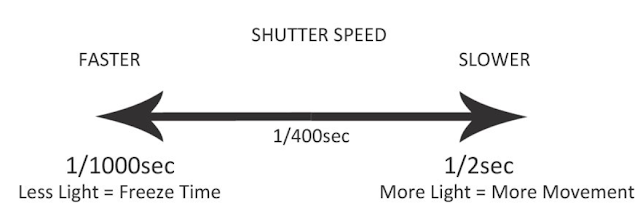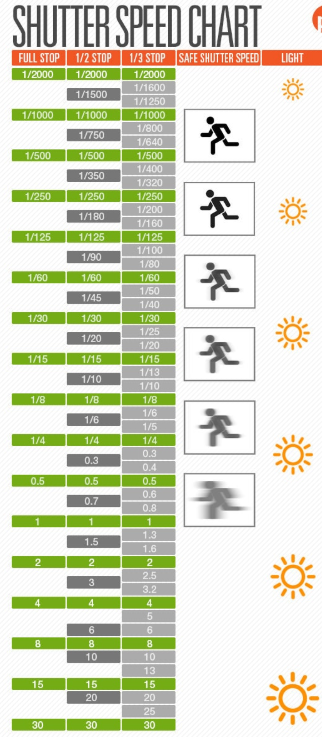Quick Tips to Change the Shutter Speed on Your Camera
Shutter speed is defined as the time duration between the opening and closing of the camera shutter. It is the time that the sensor or film records the light and, hence, creates a photograph.
Firstly, to find where to adjust your shutter speed have a scroll through your cameras menu. Some cameras will have a quickfind button or touch screen solution however others you’ll have to dig a little deeper and adjust in the settings menu.
The shutter speed to use depends a lot on the speed of the subject’s movement as well as your individual preference. But if you’re unsure about where to start, try 1/10 of a second.From our experience, we’ve found that 1/10 second creates sufficient blur even if the subject is moving at walking speed. At the same time, it should still be fast enough to keep your background still. Just make sure that:
- Image stabilisation (IS Mode) is on,
- Your camera is held steady, and
- You are not using the telephoto end of your lens (Focal length matters. We'll explain why later).From there, you could adjust the shutter speed as necessary. If you think the shot is too blurry, try going 1 stop faster (1/13 second). If you want a stronger motion blur, try 1 stop slower (1/8 second).
Quick Tips for Shutter Speed Setting
- Put your camera into manual mode. If you have a Canon, you can also put it in TV (Time Value) mode. If you have a Nikon or Sony, S (shutter priority mode) will also work.
- There should be a dial or arrows somewhere on your camera. Move the dial left or right/ arrows up or down depending on the shutter speed you want.
- The shutter speed format is usually in 1/1000, 1/250, 1/30, etc. The higher the bottom number, the faster your shutter speed.
- Shutter speeds are measured in seconds. A shutter speed of 1/1000 means “keep the shutter open for one one-thousandth of a second.”
- The higher your shutter speed, the less light it lets in. In general, higher shutter speeds are better for daytime photography, whereas lower shutter speeds are better for nighttime photos.
Shutter Speed Chart
Shutter speed is usually measured as follows:
1/2000s, 1/1000s, 1/500s, 1/250s, 1/125s, 1/60s, 1/30s, and so on.
Each stop down the line (from 1/60s to 1/30s, for example) increases the duration of time the shutter stays open by a factor of two and, as a result, doubles the amount of light that reaches the camera sensor.
When not using a tripod or another type of support, photos tend to have a ‘shake blur’ if the shutter speed falls below a particular number. This has been calculated and is given as:
1/focal length or 1/100, whichever is faster
Therefore, if you are using a full-frame camera with an 85mm lens, the minimum shutter speed you need to keep is 1/100 (because 1/100 is faster than 1/85). However, if you are using the same camera with a 300mm lens, the minimum shutter speed is 1/300.
So, what is the right speed for your shutter? Well by now, you probably know that there is no right or wrong. It’s all about the story you want to tell. So, grab your camera, find a moving subject, and start experimenting with different shutter speeds.










whoah this kind of webpage is without a doubt delightful this site learning
ReplyDeletethe articles you write. Sustain the greater paintings!
You recognize, a great deal of persons feel the need round of golf for the data,
you are able to solution individuals substantially.
We often see a photographer who is also needed, because he is needed in weddings etc. People use him for their looks or in addition to this he is also needed in news etc. Along with this, career is also important, you can get professional cover letter writing services in Dubai for your career, this is the best to help you get a job. You should also focus on your career along with your photo selfie.
ReplyDelete